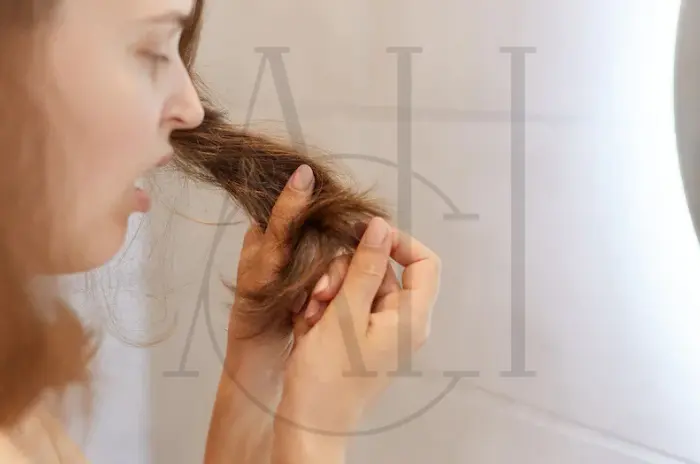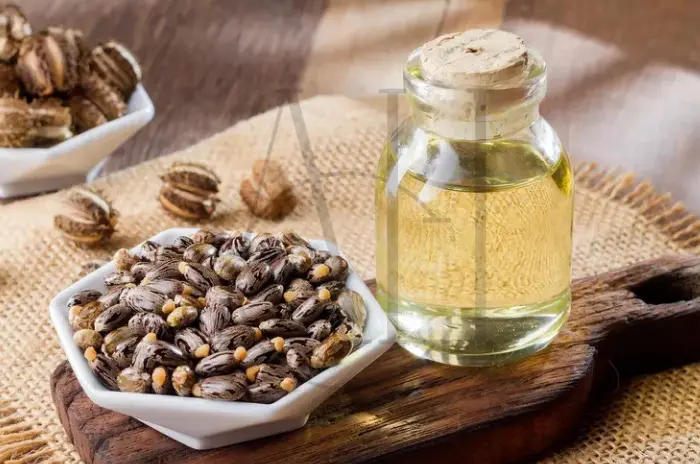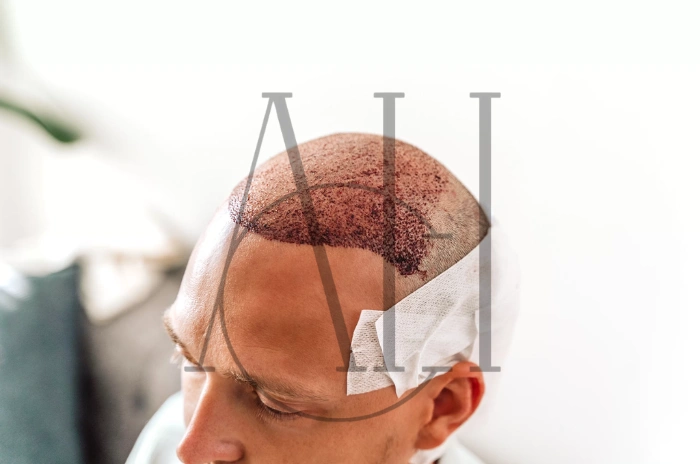High porosity hair absorbs moisture quickly but loses it just as fast, creating a frustrating cycle of dry, frizzy hair. This common condition affects millions worldwide, often leaving people confused about why their hair feels dry despite frequent conditioning. At Albania Hair Clinic, we help clients transform their high porosity hair through proper care techniques and product selection.
Understanding how to care for this challenging hair type is essential for achieving healthy, manageable locks that maintain moisture throughout the day. With the right approach, even severely damaged high porosity hair can be restored to a healthier state.
Table of Contents
ToggleWhat Is High Porosity Hair?
High porosity hair has damaged or lifted cuticles with gaps that allow moisture to enter and escape easily. The cuticle layer acts like roof shingles – in healthy hair, they lie flat and smooth. In high porosity hair, these “shingles” are raised, cracked, or missing, creating openings that affect moisture retention.
This condition typically develops from chemical processing like coloring, perming, or relaxing treatments that lift and damage cuticles over time. Heat styling with flat irons, curling irons, or blow dryers at high temperatures also contributes significantly to cuticle damage. Environmental factors such as sun exposure, chlorine, and harsh weather can gradually compromise your hair’s protective barrier.
Understanding that high porosity is usually acquired rather than genetic helps explain why your hair care needs may have changed over time. Hair that was once easy to manage may now require intensive care and different products.
What Does High-Porosity Hair Mean?
Understanding what high porosity means for your daily routine is crucial for developing effective management strategies. The porosity level changes how your hair behaves during washing, conditioning, styling, and maintenance.
Fast Water and Product Absorption
High porosity hair acts like a sponge, immediately soaking up water and products through damaged cuticle openings. When you wet your hair, it becomes saturated within seconds, often feeling heavy and waterlogged. This rapid absorption extends to all products – conditioners, treatments, and oils penetrate immediately rather than sitting on the surface.
The rapid absorption means you often need more product than someone with normal porosity hair to achieve the same effect. Your hair drinks up everything you apply, requiring generous application and sometimes multiple product layers for lasting results.
And Why It Also Loses Moisture Quickly
The same openings that allow rapid absorption create pathways for moisture to escape just as quickly. Throughout the day, hydration gradually evaporates through cuticle gaps, leaving hair dry and frizzy by afternoon despite thorough morning conditioning.
This moisture loss accelerates in air-conditioned offices, heated spaces, low humidity conditions, and during physical activity. Understanding this cycle explains why traditional hair care often fails – the problem isn’t just getting moisture in, but keeping it there.
How High Porosity Affects Hair Health
High porosity significantly impacts overall hair health beyond moisture retention. The compromised cuticle layer makes hair more vulnerable to damage from environmental stressors, chemical treatments, and routine styling practices.
Hair with damaged cuticles becomes more susceptible to breakage because structural integrity is compromised. The rough surface creates friction during brushing, styling, and even sleeping, leading to tangles and breakage. Chemical treatments may process unevenly, with some sections absorbing more product than others, creating patchy results.
Additionally, high porosity hair experiences faster color fading because open cuticles allow color molecules to escape easily. This means more frequent touch-ups and higher maintenance costs for chemically treated hair.
Recognizing Open Cuticles & High Absorption
Learning to identify open cuticles involves understanding visual and tactile indicators. The most reliable test involves running fingers along a hair strand from root to tip, then reversing direction. High porosity hair feels noticeably rougher when moving from tip to root because you’re feeling lifted cuticles.
Visually, high porosity hair often lacks natural shine because lifted cuticles scatter light instead of reflecting it smoothly. Hair may appear dull even when clean and conditioned. Color fades quickly in chemically treated hair as open cuticles allow color molecules to escape during washing and environmental exposure.
Signs & Characteristics of High Porosity Hair
Recognizing high porosity hair involves observing distinct behaviors that often appear together and become more noticeable over time.
Hair Absorbs Water Fast
When you wet high porosity hair, it becomes completely saturated almost immediately, feeling heavy and waterlogged within seconds. This differs dramatically from low porosity hair, which initially repels water. The rapid absorption extends to all liquid products, which seem to disappear into hair instantly rather than requiring time to work in.
Hair Dries Very Quickly
High porosity hair typically air-dries much faster than normal hair because open cuticles provide pathways for water evaporation. What might take 2-3 hours in low porosity hair could dry completely within 45 minutes to an hour.
While quick drying seems convenient, it often leaves hair feeling parched because rapid moisture loss doesn’t allow conditioning products time to provide lasting benefits.
Hair is Frizzy, Tangles, or Dull
Frizz occurs because damaged cuticles allow environmental humidity to penetrate the hair shaft, causing uneven swelling. Tangling happens because the rough cuticle surface catches on neighboring strands and external objects. The dull appearance results from uneven light reflection off the damaged cuticle surface.
How to Know If You Have High Porosity Hair
Determining your hair’s porosity level helps guide product selection and care routine development. Several reliable tests provide insight into your hair’s condition.
Try the Water Test
The water test is the most reliable at-home method. Collect clean hair strands from your brush and drop them into room-temperature water. Observe their behavior over 5-10 minutes. High porosity hair sinks quickly, often within the first minute, because open cuticles allow rapid water penetration.
Test multiple strands from different head areas, as porosity can vary throughout your hair due to different exposure levels to damage.
Look at How Your Hair Feels
Take a single strand and slide your fingers from root to tip, then reverse direction. High porosity hair feels noticeably rougher when moving against the cuticle direction due to lifted edges. Pay attention to how your hair feels after washing – high porosity hair often feels rough or tangled even after conditioning.
How to Take Care of High-Porosity Hair
Caring for high porosity hair requires a comprehensive approach addressing moisture needs and cuticle protection. The goal is to fill gaps in damaged cuticles while providing ongoing nourishment.
Use Deep Moisturizing Products
Deep conditioning treatments should be performed 1-2 times weekly. Look for treatments containing hyaluronic acid, glycerin, and natural oils that provide substantial moisture. Apply to clean, damp hair and use gentle heat to enhance penetration. Allow treatments to work for the full recommended time.
Consider rotating between moisture-focused and protein treatments to address different aspects of high porosity hair care.
Add Protein to Make Hair Stronger
Protein treatments help fill cuticle gaps and strengthen hair shafts. Start with mild treatments containing hydrolyzed proteins or keratin weekly, adjusting based on your hair’s response. Signs you need protein include excessive stretchiness when wet or lack of curl definition.
Always follow protein treatments with moisturizing products to maintain proper balance. Too much protein can cause brittleness and breakage.
Rinse with Cold Water to Close Cuticles
Cold water rinses help temporarily close lifted cuticles, reducing moisture loss and improving shine. Finish your washing routine with the coolest water you can tolerate. This technique is particularly effective after treatments, helping seal benefits into your hair.
Seal Hair with Oils or Creams
Sealing products create protective barriers that lock in moisture. Apply oils or heavy creams to damp hair, focusing on mid-lengths and ends. Effective options include coconut oil, shea butter, and argan oil. These provide surface protection while offering some penetration into the hair shaft.
Use Leave-In Conditioners
Leave-in conditioners provide ongoing protection throughout the day. Choose products formulated for damaged hair, applying to damp hair before styling. Many people with high porosity hair benefit from reapplying during the day when hair feels dry.
Best Products for High-Porosity Hair
Product selection requires understanding ingredients that address porosity-related challenges effectively.
|
Product Category |
Key Ingredients |
Primary Benefits |
Application Tips |
|
Shampoos |
Sulfate-free cleansers, natural oils |
Gentle cleansing without stripping |
Use lukewarm water, focus on scalp |
|
Conditioners |
Proteins, ceramides, heavy oils |
Fills gaps, provides moisture |
Apply generously, use cool rinse |
|
Deep Treatments |
Hydrolyzed proteins, hyaluronic acid |
Repairs damage, intense hydration |
Use heat, allow full processing time |
|
Leave-ins |
Silicones, natural butters |
Ongoing protection, moisture sealing |
Apply to damp hair, reapply as needed |
Creams with Protein
Protein-enriched creams provide structural support and moisture. Look for products containing keratin, silk proteins, or wheat proteins combined with moisturizing ingredients. Apply to damp hair for best penetration, focusing on mid-lengths and ends.
Rich Leave-In Conditioners
High porosity hair benefits from heavier leave-in formulations that withstand rapid absorption. Choose creamy formulations containing natural oils, butter extracts, or ceramides that provide substantial protection.
Oils to Keep Moisture In
Different oils serve specific purposes. Coconut oil penetrates the hair shaft for internal conditioning. Olive oil provides excellent sealing properties. Argan oil offers versatility with both penetrating and sealing benefits. Castor oil provides heavy moisture retention for severely damaged hair.
Moisturising Shampoos
Use sulfate-free shampoos with natural oils and gentle surfactants. Consider co-washing between traditional shampoos to maintain moisture levels. Choose products specifically labeled for damaged or chemically treated hair.
High vs Low Porosity Hair
Understanding differences between porosity levels helps explain why certain approaches work better for specific hair types.
What Makes Them Different
Low porosity hair has intact cuticles that resist moisture penetration but retain hydration well once absorbed. High porosity hair has damaged cuticles allowing rapid penetration but poor retention. These differences affect washing frequency, product selection, and styling techniques.
Which Type Is Easier to Manage?
Low porosity is generally easier to manage long-term because it maintains moisture and styles predictably once properly hydrated. High porosity requires more frequent attention but responds quickly to treatments when you find the right routine.

How to Test Your Hair’s Porosity
Accurate testing provides the foundation for effective care routine development and helps you understand exactly what your hair needs. Professional assessment offers the most comprehensive evaluation, but several reliable at-home methods can provide valuable guidance for your daily hair care decisions.
The Water‑Glass Strand Test
This classic test remains the gold standard for at-home porosity assessment. Begin by collecting several clean hair strands from your hairbrush, comb, or pillow – avoid pulling hair directly from your scalp, as natural oils can interfere with test accuracy. Choose strands that haven’t been recently treated with heavy oils or styling products for the most reliable results.
Fill a clear glass with room-temperature water and carefully drop the hair strands into the water one at a time. Observe their behavior closely over the next 5-10 minutes, noting exactly how long each strand takes to sink or if it continues floating. Document your observations with timing, as this provides crucial information about your hair’s porosity level and damage severity.
For the most comprehensive assessment, test multiple strands from different areas of your head. Hair near your hairline, crown, and nape may show different porosity levels due to varying exposure to heat styling, chemical treatments, and environmental damage. This variation helps you understand which areas of your hair need the most intensive care.
What Floating or Sinking Means
The behavior of your hair strands in water directly correlates with the condition of your cuticles and overall hair health. Hair that sinks immediately or within the first minute indicates severely compromised cuticles characteristic of high porosity hair. These strands have numerous gaps and openings that allow water to penetrate rapidly, weighing down the hair.
Strands that sink gradually over 2-4 minutes suggest moderate to normal porosity, where cuticles have some damage but still maintain reasonable integrity. Hair that continues floating for 5+ minutes indicates low porosity with tightly closed, intact cuticles that resist water penetration.
The speed of sinking also reveals damage severity levels. Immediate sinking suggests severe porosity requiring intensive repair protocols, while gradual sinking indicates moderate damage that may respond well to regular maintenance routines. This information helps you tailor your care approach to match your hair’s specific needs and avoid over-treating or under-treating your hair.
How to Keep Moisture in High-Porosity Hair
Moisture retention represents the greatest challenge for high porosity hair management, requiring strategic layering techniques and protective barriers to combat the constant moisture loss that characterizes this hair type. Success depends on understanding how different products work together to create a comprehensive moisture retention system.
Use the LOC or LCO Method
These systematic layering approaches maximize moisture retention by creating multiple protective barriers. The LOC method applies Leave-in conditioner, then Oil, then Cream, while LCO applies Leave-in, then Cream, then Oil. Each product serves a specific function in the moisture retention process.
For high porosity hair, the LCO method often proves more effective because the cream provides substantial moisture and protein that penetrates the damaged cuticles, while the oil creates a protective seal that locks everything in. However, hair texture, climate, and individual preferences may influence which method works better for you.
Apply each layer to appropriately damp hair, allowing brief absorption time between applications. Start with small amounts and build up as needed – high porosity hair typically requires more product than you might initially expect, but layering allows you to control the amount gradually rather than overwhelming your hair with one heavy application.
Apply Heavy Butters and Oils
High porosity hair often requires substantially heavier products than other hair types to achieve effective moisture retention and cuticle protection. Don’t hesitate to use rich butters like shea butter, mango butter, murumuru butter, or cocoa butter, which provide intensive moisture while helping to temporarily fill gaps in damaged cuticles.
The key to successful application lies in applying these concentrated products to very damp hair, which facilitates better distribution and prevents them from sitting on the hair surface as an uneven, heavy coating. The water content helps carry the products into the hair shaft while diluting them enough for manageable application and styling.
Section your hair during application to ensure even distribution of these potent products. Work systematically through each section, paying particular attention to the mid-lengths and ends where porosity is typically highest and damage most severe.
Apply Products to Wet Hair
Product application to thoroughly wet hair ensures optimal penetration and distribution for high porosity hair, which absorbs everything rapidly but needs strategic application for lasting benefits. Wet hair has temporarily swollen cuticles that facilitate better product absorption, and the water content acts as a delivery system for heavier products.
This technique proves particularly crucial for protein treatments, deep conditioners, and sealing products. Water helps distribute concentrated formulations evenly while preventing them from creating heavy patches in specific areas. The dilution effect also makes products easier to spread through longer or thicker hair.
Don’t be conservative with product amounts on wet hair – high porosity hair’s rapid absorption rate typically requires more product than package directions suggest. Start generously and adjust based on your hair’s specific absorption patterns and styling preferences.
Try Protein Treatments
Regular protein treatments help temporarily repair damaged cuticles and provide crucial structural support to weakened hair shafts, but they require careful balance to avoid protein overload. Protein molecules work by filling gaps in damaged cuticles and reinforcing the hair’s internal structure.
Start with mild protein treatments containing hydrolyzed proteins, amino acids, or keratin derivatives applied weekly. Monitor your hair’s response carefully – positive signs include improved elasticity, reduced breakage, better curl definition in textured hair, and enhanced ability to hold moisture. Signs of protein overload include increased brittleness, stiffness, rough texture, or a straw-like feel that doesn’t improve with moisturizing.
Adjust protein frequency based on your hair’s damage level and response patterns. Severely damaged hair may initially benefit from twice-weekly protein treatments, while moderately porous hair might thrive with bi-weekly applications. Always follow protein treatments with moisturizing products to maintain the essential protein-moisture balance.
Rinse with Cool Water
Cool water rinses help temporarily close lifted cuticles and lock in the benefits of treatments and conditioning products, providing immediate improvement in moisture retention and overall hair appearance. Use the coolest water temperature you can comfortably tolerate as the final step in your washing routine.
This technique proves especially important after protein treatments, deep conditioning sessions, or intensive moisture treatments. The cool temperature helps seal treatment benefits into the hair shaft and provides measurable improvement in shine, smoothness, and manageability. The temporary cuticle closure also reduces immediate moisture loss and tangling.
Make cool rinsing a consistent habit rather than an occasional technique. The cumulative effects of regular cool rinsing contribute significantly to better long-term moisture retention and improved overall hair health and appearance.
Best Oils and Shampoos to Use
Selecting the right oils and cleansing products forms the foundation of successful high porosity hair care, as these products directly impact moisture retention and cuticle protection. Understanding how different formulations work helps you make informed choices that support your hair’s specific needs.
Oils That Seal: Avocado, Olive, Castor, Coconut
Each oil offers distinct molecular properties and benefits for high porosity hair care, making them suitable for different applications and hair needs. Understanding these differences helps you choose the most effective oils for your specific situation and styling preferences.
Coconut Oil: This unique oil has a small molecular structure that allows it to actually penetrate the hair shaft rather than just coating the surface. This makes it invaluable for pre-shampoo treatments, overnight conditioning, and intensive repair protocols. It provides internal strengthening while offering some surface protection.
Olive Oil: Excellent for surface sealing and environmental protection, olive oil creates a protective barrier that helps lock in moisture while adding natural shine. Its heavier consistency makes it particularly effective for very porous hair that needs substantial sealing power, though it may be too heavy for fine hair textures.
Avocado Oil: Offers versatility with both penetrating and sealing properties, making it suitable for various applications throughout your hair care routine. It’s rich in vitamins and fatty acids that nourish hair while providing moderate weight that works well for most hair textures and porosity levels.
Castor Oil: While heavy, this oil provides exceptional moisture retention and can help improve overall hair health with consistent use. Its thickness makes it particularly effective for end sealing, overnight treatments, and addressing severely damaged areas that need intensive care.
Shampoos to Use: Sulfate-free and Moisturizing
Sulfate-free shampoos prevent additional cuticle damage while providing effective cleansing that high porosity hair desperately needs. Look for formulations containing gentle surfactants derived from coconut or other natural sources, combined with moisturizing ingredients like natural oils, glycerin, or plant extracts that cleanse without stripping.
Choose shampoos specifically labeled for damaged, chemically treated, or dry hair, as these formulations typically contain ingredients designed to address porosity-related challenges. These specialized products often include mild proteins, conditioning agents, and pH-balancing ingredients that support cuticle health.
Consider incorporating co-washing (conditioner-only cleansing) between traditional shampoo sessions to maintain optimal moisture levels while still achieving clean hair and scalp. Many people with high porosity hair find they can extend time between traditional shampoos by using cleansing conditioners for routine maintenance, reserving stronger cleansing for weekly or bi-weekly use.
Home Remedies That Help
Natural treatments provide effective, cost-efficient support for high porosity hair care routines, often using ingredients you already have at home. These remedies can effectively supplement commercial products while providing gentle, nourishing alternatives for regular maintenance.
Apple Cider Vinegar Rinse
Apple cider vinegar rinses help temporarily close cuticles and remove mineral deposits and product buildup that can weigh down high porosity hair and interfere with moisture absorption. The acidic pH helps smooth cuticles while removing dulling deposits from hard water and styling products.
Mix 1-2 tablespoons of raw, unfiltered apple cider vinegar with 1 cup of cool water for an effective clarifying rinse. Use this treatment as a final rinse after conditioning, allowing it to remain on hair for 1-2 minutes before rinsing thoroughly with cool water. The temporary cuticle closure can significantly enhance shine while removing buildup that makes hair feel heavy or appear dull.
Incorporate this treatment weekly or bi-weekly, depending on your local water hardness and product usage patterns. Areas with hard water may benefit from more frequent vinegar rinses to combat mineral accumulation, while those using many styling products might need regular clarification to prevent buildup.
Aloe Vera and Honey Masks
Pure aloe vera gel provides soothing moisture while containing natural proteins and amino acids that can help temporarily strengthen damaged hair structure. Raw honey acts as a natural humectant, drawing moisture from the environment and helping maintain hydration levels throughout the day.
Create a simple but effective mask by mixing equal parts pure aloe vera gel and raw honey, ensuring both ingredients are as natural and unprocessed as possible for maximum benefit. Apply this mixture to clean, damp hair and allow it to work for 20-30 minutes before rinsing thoroughly with cool water.
This treatment provides gentle moisture without the potential heaviness of some commercial deep conditioning masks, making it suitable for fine hair or those who experience product buildup easily. The natural ingredients are gentle enough for frequent use while providing measurable benefits for high porosity hair, including improved softness, enhanced shine, and better moisture retention.
Five Tips to Manage High-Porosity Hair
Repair with Protein & Moisture
Balance protein and moisture treatments based on your hair’s response. Monitor elasticity, texture, and breakage to determine optimal ratios. Keep a simple journal tracking treatments and results.
Use Deep Conditioning Masks
Weekly deep conditioning is essential. Choose masks for damaged hair and use gentle heat to enhance penetration. Allow full processing time for maximum benefit.
Always Apply Heat-Protecting Spray
Protect compromised hair from additional heat damage. Apply to damp hair before any heat styling and choose products offering protection up to your styling temperatures.
Use Products Made for Porous Hair
Invest in specialized products designed for damaged hair. These contain ingredients that address porosity-specific challenges and often provide better results than generic products.
Avoid Using Heated Tools
Minimize heat styling to prevent additional damage. When necessary, use lowest effective temperatures and comprehensive heat protection.

How to Avoid Over‑Moisturizing
While high porosity hair desperately needs moisture, over-moisturizing can create problems just as frustrating as dryness. Understanding the signs and prevention strategies helps maintain optimal hair health.
|
Over-Moisturizing Signs |
What It Means |
Immediate Action |
|
Mushy, gummy texture when wet |
Protein structure compromised |
Reduce moisture treatments |
|
Limp, flat hair when dry |
Too much moisture, not enough protein |
Add protein treatments |
|
Loss of curl definition |
Weakened hair structure |
Incorporate strengthening products |
|
Hair feels heavy/greasy |
Product overload |
Clarify and reset routine |
Listen to Your Hair—If Hair Is Limp, Stop
Learning to recognize moisture overload signs prevents long-term damage:
When Hair is Wet:
- Feels unusually soft, mushy, or gummy
- Stretches excessively without snapping back
- Loses all texture and structure
- Appears translucent or overly soft
When Hair is Dry:
- Appears flat against the scalp
- Lacks volume or bounce
- Looks greasy despite thorough rinsing
- Refuses to hold any styling
- Complete loss of curl definition in textured hair
Immediate Recovery Steps:
- Stop all deep conditioning treatments temporarily
- Eliminate heavy leave-in conditioners
- Reduce oil usage significantly
- Incorporate protein treatments immediately
- Use clarifying treatments to remove buildup
Alternate Moisturizing and Strengthening
Systematic protein-moisture balance prevents overload while ensuring comprehensive care:
Basic Ratios to Start:
- Severely damaged hair: 1 protein : 2 moisture treatments
- Moderately damaged hair: 1 protein : 3 moisture treatments
- Lightly damaged hair: 1 protein : 4 moisture treatments
Monitoring Your Hair’s Response:
- Needs more protein: Excessive stretch, limpness, loss of curl pattern
- Needs more moisture: Brittleness, stiffness, rough texture
- Balanced: Good elasticity, defined curls, manageable texture
Seasonal Adjustments:
- Winter: May need more moisture due to heating and low humidity
- Summer: May need more protein due to humidity and heat exposure
- Chemical treatments: Require temporary increase in protein frequency
Use Protein‑Rich Masks Once a Week
Strategic protein treatment application maintains structural integrity:
Protein Treatment Types:
- Light proteins: Amino acids, silk proteins (weekly maintenance)
- Medium proteins: Hydrolyzed keratin (bi-weekly for moderate damage)
- Heavy proteins: Whole proteins (monthly for severe damage)
Application Protocol:
- Apply to clean, damp hair
- Focus on mid-lengths and ends
- Use gentle heat if recommended
- Follow immediately with moisturizing treatment
- Monitor hair response for 24-48 hours
Long‑Term Care Tips
Achieving healthy high porosity hair requires sustained commitment and strategic lifestyle adjustments that support overall hair wellness.
Keep Up with a Moisture Routine
Consistency proves more valuable than perfection when managing high porosity hair. Establish sustainable routines that you can maintain regardless of circumstances.
Essential Routine Components:
- Daily: Leave-in conditioner application and gentle detangling
- Weekly: Deep conditioning treatment and protein treatment (alternating)
- Bi-weekly: Clarifying treatment to remove buildup
- Monthly: Professional trim or assessment
Maintaining Consistency:
- Prepare treatments in advance during less busy periods
- Keep travel-sized versions of essential products
- Create backup simplified routines for challenging periods
- Set up organized bathroom station with all necessary products
|
Time Period |
Essential Actions |
Backup Options |
|
Daily |
Leave-in conditioner, gentle styling |
Dry shampoo, protective styling |
|
Weekly |
Deep conditioning + protein treatment |
Co-washing, overnight treatments |
|
Monthly |
Professional trim, routine assessment |
Self-trimming split ends |
Trim and Care to Reduce Breakage
Regular trimming removes damaged ends and prevents further deterioration that can travel up the hair shaft.
Trimming Schedule for High Porosity Hair:
- Severely damaged: Every 4-6 weeks
- Moderately damaged: Every 6-8 weeks
- Lightly damaged: Every 8-10 weeks
Signs You Need a Trim:
- Increased tangling despite proper detangling
- Visible split ends that catch light differently
- Rough end texture contrasting with mid-lengths
- Ends that absorb products instantly without improvement
- Hair that breaks more frequently during styling
Between-Trim Maintenance:
- Use sharp haircutting scissors for maintenance trimming
- Focus only on clearly damaged single strands
- Avoid cutting when hair is wet (appears longer than reality)
- Trim conservatively – you can always cut more later
Eat Well and Stay Hydrated
Hair health reflects overall body health, making nutrition essential for long-term improvement.
Essential Nutrients for Hair Health:
|
Nutrient |
Function |
Best Sources |
|
Protein |
Hair structure formation |
Lean meats, fish, eggs, legumes |
|
Iron |
Follicle function |
Spinach, red meat, lentils |
|
Biotin |
Hair strength |
Eggs, nuts, sweet potatoes |
|
Omega-3s |
Scalp health, shine |
Fish, walnuts, flaxseeds |
|
Vitamin D |
Hair growth cycle |
Sunlight, fortified foods |
|
Zinc |
Protein synthesis |
Oysters, pumpkin seeds |
Daily Hydration Goals:
- Minimum: 8 glasses of water daily
- Active days: Additional 16-24 oz per hour of activity
- Dry climates: Increase intake by 20-30%
- Signs of adequate hydration: Pale yellow urine, good skin elasticity
Use Protective Styles to Keep Hair Safe
Minimize mechanical damage through strategic styling choices that reduce daily manipulation.
Effective Protective Styles:
- Loose braids: Single braid or side braids without tension
- Low buns: Secured with gentle hair ties, rotated daily
- Twist-outs: Can be refreshed for multiple days
- Loose ponytails: Using snag-free elastics, varied placement
Sleep Protection Strategy:
- Silk/satin pillowcases: Reduce friction and moisture loss
- Hair bonnets or scarves: Complete protection during sleep
- Loose braids: Prevent tangling without creating tension
- Medusa clipping: Multiple loose clips to prevent matting
Extra Tips for Strong Hair
Additional strategies maximize high porosity hair health while minimizing ongoing damage. These approaches complement your basic routine and provide extra protection.
Use Heat Protection Before Styling
Heat protection is non-negotiable for high porosity hair management, as compromised cuticles cannot effectively protect against high temperatures.
Heat Protection Strategy:
|
Hair Condition |
Heat Protectant Type |
Application Method |
|
Severely damaged |
Multi-layer protection |
Leave-in + cream + spray |
|
Moderately damaged |
Dual protection |
Leave-in + spray |
|
Lightly damaged |
Single protection |
Heat protectant spray |
Application Steps:
- Start with damp hair: Heat protectants work better on slightly wet hair
- Apply leave-in conditioner: Creates first barrier layer
- Add dedicated heat protectant: Focus on mid-lengths and ends
- Allow products to absorb: Wait 2-3 minutes before applying heat
- Reapply as needed: During extended styling sessions
Heat Setting Guidelines:
- Fine hair: 250-300°F (120-150°C)
- Medium hair: 300-350°F (150-175°C)
- Thick hair: 350-400°F (175-200°C)
- Always start low: Increase temperature only if necessary
Avoid Very Hot Water When Washing
Water temperature significantly impacts cuticle condition and moisture retention in high porosity hair.
Optimal Water Temperature Protocol:
- Initial rinse: Warm water to open cuticles for cleansing
- Shampooing: Lukewarm water to avoid additional damage
- Conditioning: Cool-warm water to allow product penetration
- Final rinse: Cool water to close cuticles and seal treatments
Temperature Testing Methods:
- Wrist test: Water should feel comfortably warm, not hot
- Visual cues: No steam should be visible from water
- Hair response: Hair shouldn’t feel “shocked” by temperature
Hot Water Damage Signs:
- Increased tangling immediately after washing
- Hair feels rougher than before washing
- Rapid moisture loss after styling
- Increased frizz despite conditioning treatments
Eat Well and Stay Hydrated
Nutrition provides building blocks for healthy new hair growth and supports overall scalp health.
Daily Nutritional Targets:
|
Nutrient Category |
Daily Goal |
Impact on Hair |
|
Protein |
0.8-1g per kg body weight |
Hair structure and strength |
|
Healthy fats |
20-35% of calories |
Shine and flexibility |
|
Iron |
18mg (women), 8mg (men) |
Oxygen transport to follicles |
|
Water |
8-10 glasses |
Hydration and nutrient transport |
Foods That Support Hair Health:
- Protein sources: Eggs, fish, lean meats, quinoa, lentils
- Healthy fats: Avocados, nuts, olive oil, fatty fish
- Iron-rich foods: Spinach, red meat, beans, fortified cereals
- Vitamin C: Citrus fruits, berries, bell peppers (aids iron absorption)
- Biotin sources: Eggs, nuts, seeds, sweet potatoes
Hydration Enhancement Tips:
- Add electrolytes: Especially during exercise or hot weather
- Monitor urine color: Aim for pale yellow
- Eat water-rich foods: Cucumbers, watermelon, soups
- Set reminders: Use apps or alarms to maintain consistent intake
Supplements to Consider:
- Biotin: 30-100 mcg daily for hair strength
- Iron: If deficient (test levels first)
- Omega-3: 1000mg daily for scalp health
- Vitamin D: Especially in low-sunlight climates
Signs Your Nutrition is Supporting Hair Health:
- New growth appears stronger and shinier
- Less breakage during styling and handling
- Improved scalp condition and reduced irritation
- Better overall hair texture over 3-6 months
FAQ
What exactly is high porosity hair?
High-porosity hair has damaged cuticles creating gaps that allow rapid moisture absorption and loss. This typically results from chemical processing, heat damage, or environmental factors.
How can I tell if I have high-porosity hair?
Use the water test high porosity hair sinks quickly due to rapid water absorption. You can also feel for roughness when running fingers from ends to roots.
Why does high porosity hair lose moisture so quickly?
Open cuticles create pathways for moisture to escape as easily as it enters, requiring sealing products and protective techniques to maintain hydration.
What are the key steps to effectively care for high-porosity hair?
Focus on protein-moisture balance, use deep conditioning weekly, apply products to wet hair, seal with oils, and protect from heat damage.
What types of products are best for high-porosity hair?
Choose sulfate-free shampoos, protein-enriched conditioners, heavy leave-ins, and sealing oils. Look for products designed for damaged hair.
How often should I use protein treatments?
Start weekly and adjust based on response. Balance with moisture treatments, typically maintaining a 1:2 or 1:3 protein to moisture ratio
Can home remedies help manage high-porosity hair?
Yes, apple cider vinegar rinses help close cuticles while aloe vera and honey masks provide gentle moisture and proteins.
Which is easier to manage – high or low porosity hair?
Low porosity is generally easier long-term, requiring less frequent maintenance once properly hydrated, though both can be successfully managed.




